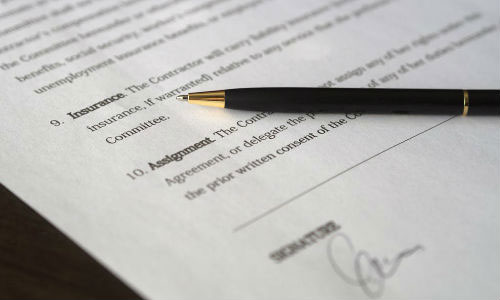
Negative car equity explained
Last updated October 28, 2021
Negative equity is where you owe more money on your car than it’s worth. Several factors contribute to a car’s value, including its condition, mileage, age and depreciation curve. If you are thinking of getting a new car, the negative equity in your current vehicle can be an issue, particularly if you are wanting to trade in or sell privately.
Value your car in under 30 seconds
Negative equity car finance
Negative car equity means the amount you owe exceeds your car's current value. For example, if you owe £2,000 to your finance company, but your car is worth £1,000, you’ll have £1,000 negative equity on your finance.
Negative equity car finance is common, especially with new cars where the car loses much of its value during the first year of ownership. As such, if you buy a car on Personal Contract Purchase (PCP) or Hire Purchase (HP), it is common for you to be in negative equity during this period, even when a high deposit has been paid. Throughout the finance agreement, the depreciation slows down, meaning that equity in the car increases. However, this doesn’t necessarily guarantee that you will be in positive equity at the end of the finance agreement.
Negative equity and PCP
If you purchased a car through Personal Contact Purchase (PCP), negative equity could be more complicated to calculate compared to if you were to finance a car through a loan.
With PCP finance, you often pay an initial deposit, followed by monthly repayments for a fixed term and an optional balloon payment at the end of the agreement to purchase the car. If the car is worth more than the balloon payment, you are in positive equity and can either buy the car or use the equity in the vehicle as a deposit towards a new vehicle.
On the other hand, your car might have depreciated faster than expected, meaning that you are in negative equity as the car is worth less than the balloon payment. Whilst you could choose to pay the balloon payment to own the vehicle, there is also an option to hand the car back to the finance company and walk away.
Drawbacks of negative equity
If you have a change of circumstances midway through your agreement, you may need to sell the car part-way through your finance agreement. However, this can cause problems where the amount owed is higher than the value of the car, meaning that you are in negative equity. If this is the case, you will need to make up the difference before you can terminate the agreement.
Negative car equity can also be an issue where a car is written off during an accident or stolen. Often insurance companies will only pay out the car’s current market value, which could be lower than the amount owed. If this is the case, you may have to pay the difference in the market value and the amount owed. Some motorists opt for GAP insurance to cover the difference between the insurance pay out and the amount owed.
Read more: Is my car a write-off?
How to minimise the risk of being affected by negative equity
The best way to avoid ending up in negative equity is to get a good deal from the seller. If you can knock down the price at the time of purchase, you are borrowing less that won’t need to be accounted for when you come to sell the car.
You could also pay a larger deposit, which reduces the amount you borrow from the finance company. This is particularly important when buying a new car that is likely to depreciate at a faster rate than a car that’s already suffered the steeper initial depreciation.
When buying a new car, consider the optional extras that won’t necessarily increase its resale price. While they may add thousands to the list price, the additional value may be negligible when selling, increasing the risk of ending up in negative equity.
Some dealerships will still allow you to trade in your old vehicle when it is in negative equity. However, this usually results in the debt being added to your new finance agreement, therefore increasing the risk that you’ll be involved in negative equity again at the end of your new agreement. As such, it is advised that you settle any outstanding finance before taking out a new agreement.
Is voluntary termination an option?
If you want to terminate your PCP or HP agreement part-way through your contract, you could be eligible for voluntary termination. Through voluntary termination, you are can return the car to the finance company providing you have paid 50% of the total amount owed - this includes any interest and balloon payments.
If you haven’t yet paid 50% of the total amount owed, you can still give the car back to the finance company by making a one-off payment to reach the 50% figure.
Read more: Cancelling car finance early
So, what are my options if I’m in negative equity?
You can simply continue making your monthly repayments, and the loan will remain the same until all payments have been made. Where you have a car that is on PCP finance, you can give the car back to the finance company at the end of the agreement if you are in negative equity.
Sell your car privately, to a dealership or to webuyanycar.com - you can get a free car valuation in under 30 seconds by entering your registration plate at the top of the page. If the valuation is lower than the amount owed you can pay the remaining balance, however, if the valuation is higher, you can sell the car and settle the outstanding finance.
Trade-in your vehicle for a cheaper model and transfer the negative equity to your new finance agreement. However, this could result in negative equity again at the end of your new agreement and isn’t advised.
If you have paid off more than 50% of the amount owed on the car through PCP or HP, you can apply for voluntary termination, allowing you to simply give the car back to the car finance company.





